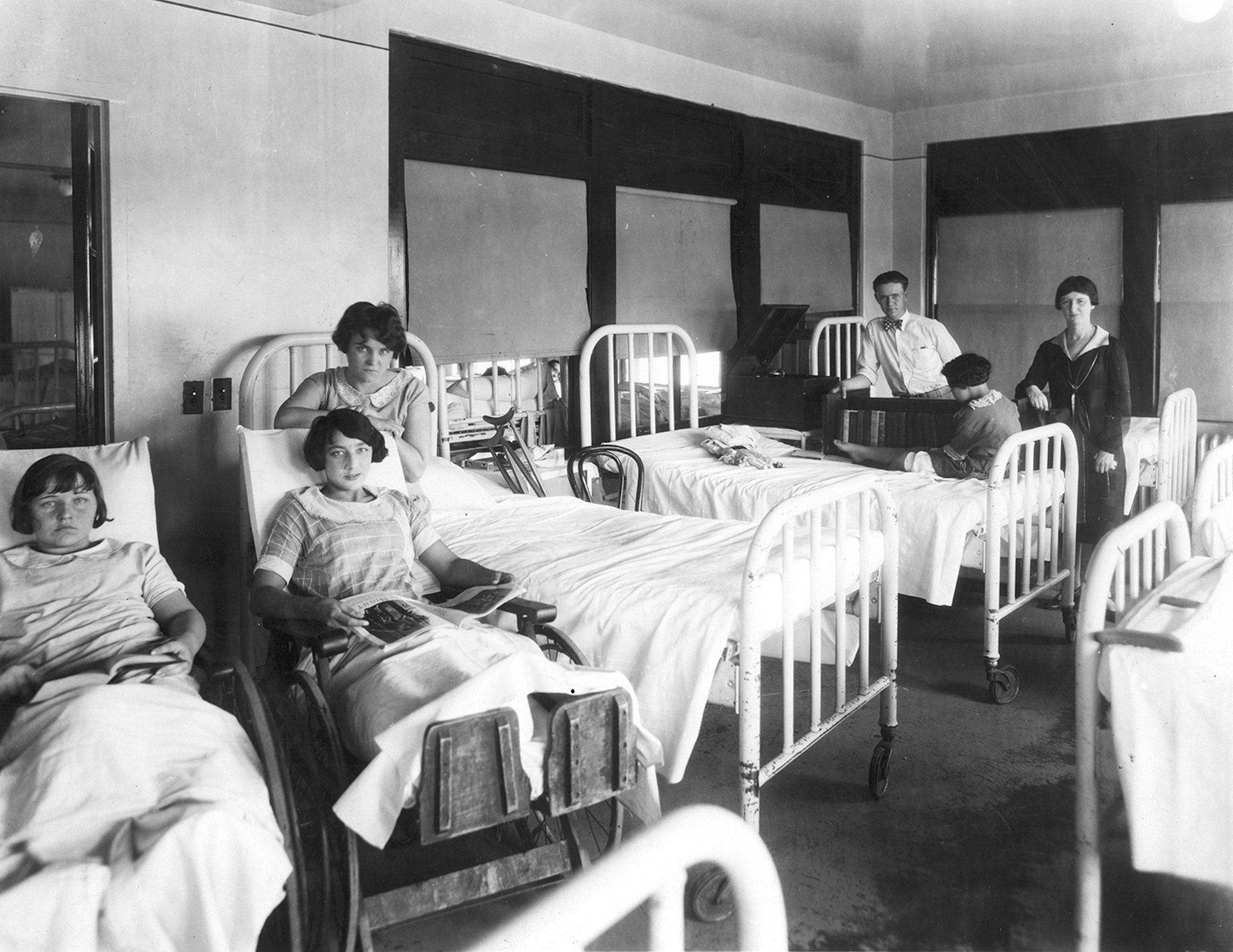
The Spanish Flu pandemic of 1918-1919, often dubbed the “forgotten pandemic,” left an indelible mark on history. This devastating global health crisis, which claimed the lives of millions, unfolded during the tumultuous final years of World War I. In this exploration of 25 key historical facts and numerical trivia, we delve into the details that define the Spanish Flu, from its surprising origins to its profound and lasting impact on our world. This pandemic, though a century in the past, continues to offer valuable insights and lessons for our response to infectious diseases in the present day.
Outbreak Origin: The Spanish Flu, despite its name, did not originate in Spain. It was christened “Spanish Flu” because Spain was a neutral country during World War I and was among the few nations that reported on the flu’s impact without censorship. In contrast, belligerent nations were downplaying the pandemic to maintain wartime morale. Consequently, the name “Spanish Flu” became widely recognized, even though its origins were elsewhere. This highlights the power of information and how the naming of a pandemic can sometimes be influenced more by politics and perception than by the actual geographic origin.
Global Reach: The Spanish Flu’s astonishing global reach is a testament to its highly contagious nature. It swept through almost every part of the world, reaching remote regions and affecting even isolated populations. This global scope underscores the challenges of dealing with a pandemic in an interconnected world and the importance of international cooperation in combating such threats.
Year of Outbreak: The Spanish Flu emerged in 1918, during the tumultuous final months of World War I. The convergence of a devastating global conflict and a deadly pandemic created a particularly challenging and chaotic period in history. The pandemic’s impact on the war effort, with both sides suffering heavy losses due to the flu, further underscores its historical significance.
First Wave: The initial wave of the Spanish Flu, which appeared in the spring of 1918, was relatively mild in comparison to the second wave. This initial wave may have misled many into underestimating the virus’s potential for destruction, contributing to its rapid spread in the following months.
Second Wave: The fall of 1918 saw the deadliest wave of the Spanish Flu, with a dramatic surge in cases and fatalities. The speed and intensity of this wave highlighted the virus’s unpredictability and the challenges public health officials faced in trying to contain it.
Speed of Spread: The Spanish Flu’s rapid transmission is a sobering reminder of how swiftly infectious diseases can spread. In some U.S. cities, the number of cases doubled every few days, overwhelming healthcare systems and leaving communities in turmoil.
Death Toll: The sheer scale of the Spanish Flu’s death toll, estimated at 50 million to 100 million people, is staggering. It serves as a stark reminder of the potential devastation that infectious diseases can wreak on a global scale and underscores the importance of preparedness and response strategies.
Mortality Rate: With a case fatality rate of approximately 2.5%, the Spanish Flu was significantly deadlier than seasonal influenza. This high mortality rate among those infected, especially young adults, was a defining characteristic of the pandemic.
Impact on Life Expectancy: The Spanish Flu’s impact on global life expectancy was profound. It reduced the average life expectancy by 12 years, reflecting the devastating effect it had on individuals and communities.
Affected Age Groups: Unlike typical influenza strains, which tend to be most lethal for the very young and the elderly, the Spanish Flu had a particularly high mortality rate among healthy young adults. This unusual pattern made the pandemic even more devastating, as those who were typically most resilient to influenza were now most vulnerable, further contributing to the overwhelming death toll. The Spanish Flu’s impact on this specific age group is a crucial aspect of its historical significance.
Speed of Death: One of the most harrowing aspects of the Spanish Flu was its ability to cause rapid death. Patients could deteriorate within hours of exhibiting their first symptoms, and a common and chilling feature was the rapid onset of cyanosis, where the skin turned blue due to a lack of oxygen. This alarming speed of death added to the terror and confusion surrounding the pandemic, highlighting the urgency of finding effective treatments and preventive measures.
Impact on World War I: The Spanish Flu had a profound impact on World War I, influencing the course of the conflict. It’s estimated that more soldiers from all sides of the war died from the flu than in battle during the deadliest months of the pandemic. The virus disrupted troop movements, strained healthcare resources, and added to the already staggering toll of the war. This illustrates how a public health crisis can intertwine with other major historical events, shaping their outcomes in unforeseen ways.
Origin of the Virus: The exact origin of the Spanish Flu remains a subject of ongoing research and debate. While it’s theorized that the virus may have originated in a military camp in Kansas, pinpointing the precise source remains challenging due to limited historical data. The quest to identify the virus’s origin underscores the importance of understanding the source of infectious diseases to prevent future pandemics.
Nobel Prize Winner: Niels Finsen, a Danish physician, was awarded the Nobel Prize in Medicine in 1903 for his pioneering work on light therapy. Finsen’s research on the therapeutic benefits of light exposure was used in treating Spanish Flu patients, offering a glimmer of hope during a time of darkness. Finsen’s recognition exemplifies how scientific advancements can have an unexpected impact on the response to a global health crisis.
Mass Quarantines: In response to the Spanish Flu, cities worldwide imposed strict quarantine measures, closing schools, theaters, and public gatherings. This historical use of quarantine measures highlights the age-old approach of isolating infected individuals to curb disease transmission, a strategy that is still relevant today in managing infectious diseases.
Lack of Medical Knowledge: The Spanish Flu occurred at a time when the flu virus had not yet been discovered, and there were no vaccines or effective treatments available. This lack of medical knowledge and tools underscores the importance of research and medical advancements in confronting new and deadly diseases.
Masks: The use of face masks as a preventive measure during the Spanish Flu pandemic is strikingly similar to the measures taken during the COVID-19 pandemic. The historical use of masks illustrates the recurrence of certain public health strategies when facing respiratory diseases and highlights the adaptability of preventive measures across time.
Social Distancing: Just as in recent times, social distancing was a strategy employed during the Spanish Flu to slow the spread of the virus. The historical use of this measure emphasizes its effectiveness in reducing disease transmission, even in the absence of vaccines or antiviral drugs.
Immune Response: Some researchers believe that the high mortality rate among young adults during the Spanish Flu was due to an overly aggressive immune response, resulting in a cytokine storm. This observation underscores the complex interplay between the virus and the human immune system and the importance of understanding the immunological responses to infectious diseases.
Impact on Children: Interestingly, the Spanish Flu had a relatively mild impact on children, in contrast to typical influenza patterns. This variation in susceptibility among different age groups emphasizes the unpredictability of influenza strains and highlights the need for tailored public health responses that consider specific population vulnerabilities and demographics.
Economic Impact: The Spanish Flu pandemic had a profound economic impact. It led to labor shortages, disrupted industries, and strained healthcare systems. The pandemic’s toll on the workforce and the economy serves as a reminder that public health crises can have far-reaching consequences beyond health, affecting social and economic stability.
Naming of H1N1: In 2009, researchers identified the 1918 Spanish Flu as an H1N1 influenza strain. This discovery linked the pandemic to a specific subtype of the influenza virus and provided valuable insights into the virus’s genetic makeup, aiding in our understanding of its origins and evolution.
DNA Recovery: In 2005, scientists made a significant breakthrough by successfully recovering the genetic material of the 1918 flu virus from the body of an Alaskan woman who had been buried in permafrost. This achievement allowed for the study of the virus’s genetic structure and contributed to research on its origins and pathogenicity.
Speed of Transmission: The Spanish Flu virus, like many influenza strains, could spread through respiratory droplets, making it highly contagious. Understanding how respiratory diseases spread is crucial for implementing effective public health measures and mitigating outbreaks.
Global Response: The Spanish Flu pandemic catalyzed international cooperation in researching and combating infectious diseases. It laid the groundwork for future pandemic preparedness and led to the development of global health organizations like the World Health Organization (WHO). The pandemic underscored the need for a coordinated, global response to emerging health threats and paved the way for the collaborative efforts we see today in addressing pandemics and other global health challenges.








